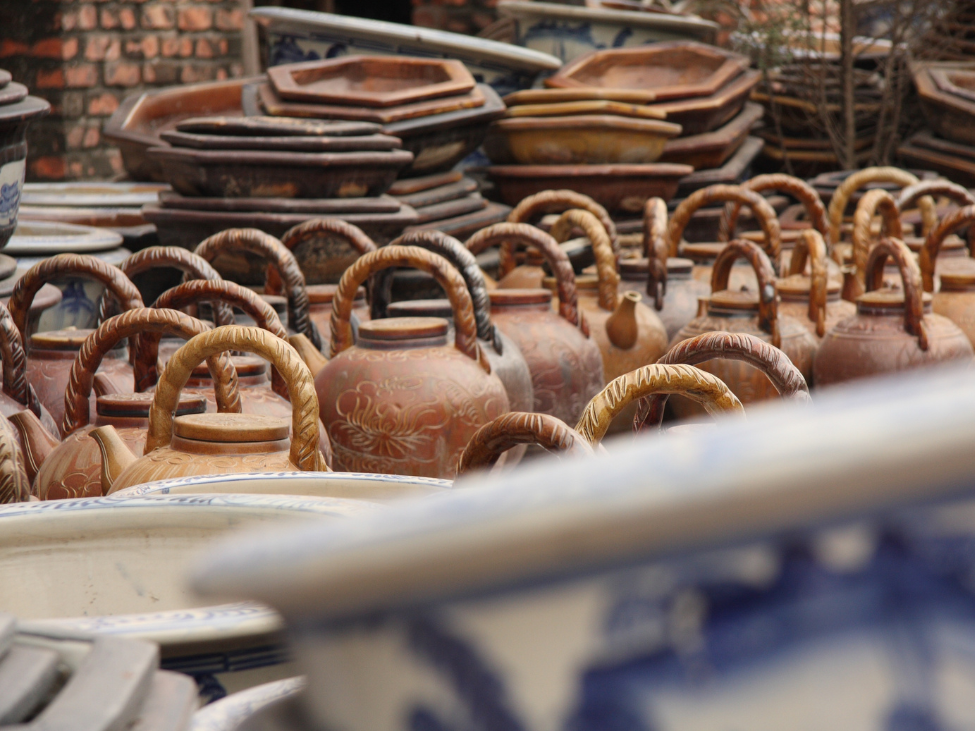My Hanoi's Heritage on A Vespa Tour: Hidden Cultural Secrets Revealed
- Steve Mueller

- Aug 13
- 3 min read
The Vespa tour through Hanoi's Old Quarter changed everything about how I see Vietnam culture. The moment I climbed onto that weathered 1972 Vespa outside Hanoi's ancient gates, I thought I was just checking off another item from my things to do in Hanoi list. What I discovered instead was a portal into authentic Vietnamese heritage that most travelers never experience. The gentle vibration of the engine beneath me and the confident smile of my guide told me this would be different from anything I'd experienced before.
Within minutes, I realized I wasn't just riding through Hanoi—I was traveling through decades of living history. Our first stop wasn't planned on any official itinerary. My guide caught the distinctive sound of vintage engines echoing from a narrow alley and followed it like a musician chasing a perfect melody. We found ourselves in a hidden corner where generations of craftsmen have kept Vespa heritage alive through pure intuition and inherited wisdom.

Discovering Hidden Hanoi Heritage Through Vespa Culture
Watching those weathered hands work magic on vintage engines, I understood why this Vespa tour experience felt so different from typical Hanoi sightseeing. This wasn't about checking landmarks off a list—it was about connecting with a culture that has woven these Italian machines into the very fabric of daily life. The master mechanic demonstrated techniques passed down through three generations, each movement carrying stories that no guidebook could ever capture. I found myself holding my breath as decades-old knowledge flowed through his fingertips.
The afternoon brought unexpected moments that became the deepest memories. When our Vespa developed a slight hesitation, my guide navigated us to another hidden repair spot tucked behind a noodle stand in Old Quarter Hanoi. The mechanic there greeted us like family, offering tea while diagnosing the problem with expert ears. He refused payment for the quick adjustment, explaining through gestures that helping fellow Vespa riders was simply part of Vietnam culture.
"Sometimes the most profound journeys happen at 25 kilometers per hour, when you're moving slow enough to hear the stories whispered by every Hanoi street corner."
Authentic Cultural Immersion in Historic Hanoi Neighborhoods
As we wound through Hanoi's maze-like neighborhoods, I began to see the city through completely different eyes. Every parked Vespa told a story through its modifications—extra mirrors speaking of safety consciousness, custom seats accommodating family rides, paint choices reflecting individual dreams. My guide pointed out details in downtown Hanoi that I would have rushed past on foot, explaining how each neighborhood developed its own Vespa personality over the decades.
The intimate scale of our two-wheeled exploration allowed for spontaneous conversations with locals who recognized something authentic in our unhurried pace. Unlike walking tours that cover predetermined routes or bus tours that rush between highlights, this heritage journey through Hanoi unfolded organically, shaped by sounds, scents, and spontaneous discoveries that revealed the true heart of Vietnam culture.
As golden hour painted Hanoi's controlled chaos in warm light, I finally understood why these machines had become so integral to the city's identity. The Vespa's scale created a perfect medium for urban exploration—intimate enough for meaningful conversations, distinctive enough to be recognized by locals, slow enough for genuine observation. This wasn't just transportation; it was cultural bridge-building at its finest.

The day ended where it began, outside Old Quarter Hanoi, but I was returning as a completely different traveler. This heritage experience had transformed my understanding of what authentic cultural immersion could feel like. Instead of observing Vietnam culture from the outside, I had briefly become part of its daily rhythm—welcomed into repair spots, offered tea by strangers, included in conversations that extended far beyond tourism.
Looking back, I realize that discovering Hanoi's Vespa heritage wasn't really about the machines at all—it was about finding a culture that transforms everything it touches into something uniquely beautiful. Every dent and scratch on those vintage scooters carries stories of resilience, creativity, and the endless human capacity to make foreign things feel like home.
Planning Your Own Hanoi Vespa Tour Heritage Adventure
How long should I plan for a Hanoi heritage tour?
Allow 3-4 hours for the full cultural experience. This gives you time to visit hidden repair spots, enjoy tea ceremonies, and have spontaneous conversations with local craftsmen without feeling rushed.
Do I need Vespa riding experience?
Absolutely not! You ride as a passenger while experienced guides handle all the navigation through Hanoi's busy streets. This lets you focus completely on absorbing the cultural stories and taking photos.
What's the best time of day for heritage tours in Hanoi?
Morning tours (8-12pm) offer the best light for photography and catch craftsmen at their most active. Afternoon tours (2-6pm) often lead to more spontaneous cultural exchanges and end with magical golden hour rides through the Old Quarter.




Comments